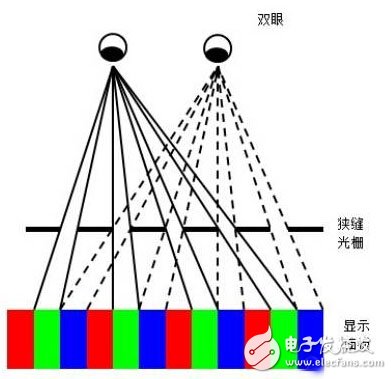introduction
As we all know, the real world is a three-dimensional space. Apart from the dimension of time, the real world is composed of three dimensions: length, width and height. We live in this three-dimensional world every day, and most of the existing display devices can only Displaying two-dimensional information does not give people a true three-dimensional feel. In order to make the displayed objects and scenes have a sense of depth (that is, 3D), people have studied the 3D display technology and experienced more than 20 years of development. At present, they have achieved very fruitful results.
The naked-eye 3D display is widely used in various fields such as advertising, media, demonstration teaching, exhibition display, and film and television. Different from the traditional binocular 3D display technology, the naked-eye 3D display has the unique characteristics of its naked eyes, that is, it does not require viewers to wear glasses or helmets to watch 3D effects, and its realistic depth of field and three-dimensional effect greatly enhances the audience. The visual impact and immersion during the viewing experience have become the best display products for product promotion, publicity and video playback.
However, how does the audience perceive 3D without wearing any equipment?
1, how the naked eye perceives 3D
The real world is a three-dimensional world. The image seen by the human eye when viewing an object has a difference. The deviation between the two images is called disparity/parallax. It is this parallax that allows people to distinguish the distance between objects and gain a sense of three-dimensionality. According to the difference of the disparity values, the parallax can be further divided into positive parallax (posiTIve parallax), negative parallax (negaTIveparallax) and zero parallax (zero parallax). When the viewer is watching, the positive parallax makes the person feel the object going deep into the screen; the negative parallax makes the person feel the object floating outside the screen; the zero parallax is the boundary between the positive parallax and the negative parallax, and the object is just projected onto the screen, that is, we Often said zero plane. The stars in the summer night are far away from us. The sight of the stars we watch is almost parallel. When the parallax is close to zero, it is difficult for the human eye to distinguish the distance of the stars. Therefore, we feel that the stars are as far away as us. The stars do not seem to be on a plane. Three-dimensional.
The human brain is an extremely complex nervous system that produces a three-dimensional stereoscopic impression of two parallax images that are reflected in both eyes, a fusion reflection through the optic nerve center, and a visual psychological response. Using this principle, we can display two left and right images with parallax through the display and send them to the left and right eyes respectively to obtain a 3D feeling.
The principle of naked-eye 3D display is generally to split the image displayed by the display through a grating or a lens, so that the human eye receives different images, thus realizing 3D display. The slit grating display occludes the displayed content by placing a slit with a suitable parameter in front of the display panel. After a certain distance, the light reaching the human eye can be separated, and the two eyes receive two images containing parallax. In Figure 1, the human eye can see blue and green, respectively, so that a stereo effect can be produced.

Figure 1 Schematic diagram of slit grating
Fig. 1 Principle of parallax barriers display
The lenticular lens adopts the same principle, but the implementation method is changed from a slit to a lens. The lens refracts different display contents to different places in the space by refraction of light, and the content displayed when reaching the human eye is Separately, the human eye receives two images with parallax, which produces a stereoscopic effect, as shown in Figure 2.

Figure 2 Cylindrical lens display principle
Fig. 2 Principle of lenTIcular lenses display
Therefore, the naked-eye stereoscopic display is still based on the principle of stereoscopic vision, but by improving the stereoscopic display, the image containing the parallax is separately transmitted to our left and right eyes, and then the stereoscopic image is viewed by means of specific optical occlusion and optical path propagation control.
Auto Tail & Licence Plate Light
Tail light is a red light on the back of a car that makes it possible for the vehicle to be seen in the dark. Licence plate light bright sign on a vehicle that shows its registration number. The rear lights are shown in the front of the car in front of the vehicle and show the location of the two workshops, so they are mounted on both sides of the vehicle. Japan's safety regulations are the same as those of European standard ECE7. The light intensity near the center is 4~12 CD and the light color is red. 1. With sufficient light intensity, the car taillight can clearly distinguish the signal from the driver or pedestrian of other vehicles even in bright sunlight. 2, night driving, tail lights light will not produce glare to other vehicle drivers or pedestrians and uncomfortable feeling As the ideal tail lights should have the following characteristics: (1) high luminous intensity and reasonable distribution of light intensity; (2) fast forward time of luminous rise; (3) long life, no maintenance, low energy consumption; (4) strong switch durability; (5) good impact resistance.
Auto Tail & Licence Plate Light
Auto Tail,Licence Plate Light,LED Tail Light,Waterproof Licence Plate Light
SHINING BLICK ENTERPRISES CO., LTD. (Heshan Jianhao Lighting Industrial Co., Ltd.) , https://www.sunclubtw.com